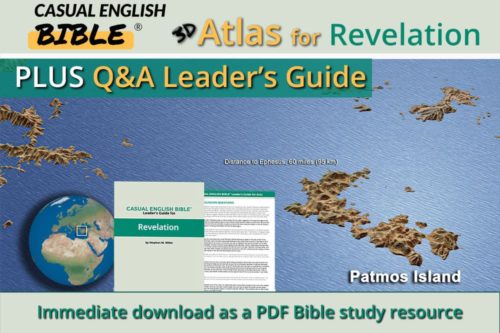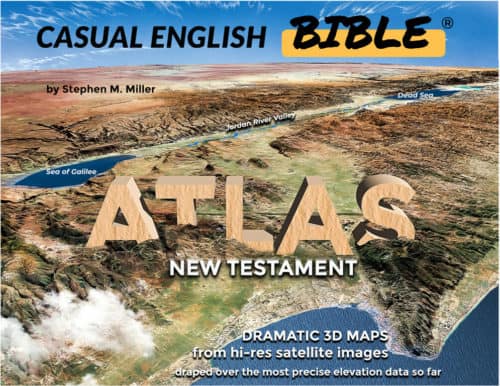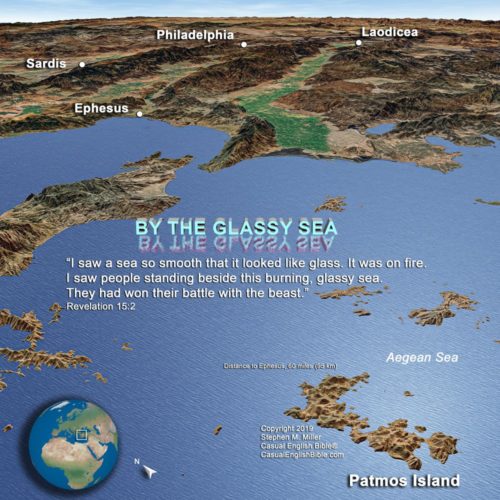Revelation 15
Plagues in a bowl
Singing by the Glassy Sea
1Then I saw another miraculous sign [1] there in heaven—powerful and jaw-dropping. I saw seven angels armed with seven plagues. These plagues would become earth’s last disasters—the finale of God’s anger at the world. 2I saw a sea so smooth that it looked like glass. It was on fire. I saw people standing beside this burning, glassy sea. They had won their battle with the beast, his statue, and the number representing his name. [2] There they stood, holding harps that God himself had given them. 3They sang a song by God’s servant Moses and another song about the Lamb. [3]“You do good work, Lord.
It’s wonderful and marvelous, God.
You’re fair and honest too,
ruler of every country on earth.
and give you the honor you deserve?
You’re the only one holy. [4]
Everyone will realize it and worship you
when they see the helpful work you’ve done.”
Seven Bowls Brimming with Plagues
5After that, I saw heaven’s temple open. It’s also known as the Tent of Agreement. [5] 6The seven angels armed with seven plagues came walking out of the temple. They wore clean, bright linen clothes with gold sashes across their chests. 7One of the four beings [6] gave each of the seven angels a gold bowl. Anger of the eternal God filled every bowl. 8God’s power and glorious presence filled the temple with smoke. [7] No one could go inside until the seven angels finished unleashing all seven disastrous plagues.Footnotes
This is sign number three. The first two show up in Revelation 12:1, 3.
666 (Revelation 13:18). They had refused to allow this number to be written on their forehead or on their right hand. This was possibly a symbolic, coded way for John to say Christians were refusing to play by Rome’s rules and worship Rome’s gods.
The songs are “of” Moses and the Lamb. That’s vague. It could mean: by, about, for, or devoted to. The Bible preserves three songs reportedly by Moses: (1) Exodus 15:1-18, after crossing the sea and escaping from Egypt’s army. (2) Numbers 21:17-18, after finding water in a well the people dug. (3) Deuteronomy 31:30—32:43, near the end of his life, and after commissioning Joshua as the new leader. Scholars debate which, if any of these, track well with the first song John reports. The Exodus song seems especially popular because of its theme about victory and gratitude, though not so much for the word choices. The reference to the second song either by or about the Lamb is hard to figure out. John doesn’t say where one song ends and another begins. And it reads like one song.
Holy is a word Bible writers used most often to describe objects in the Jerusalem Temple or people who are devoted to God. It’s rare for Bible writers to call God holy. In relation to God, it’s not always clear what the writers intended the word to mean. The word John uses shows up only here and in Revelation 16:5. Some scholars say holy refers to the uniqueness of God—he’s the one and only. Others suggest it means he’s fair and honest and perfectly right in everything he says and does. He’s pure in every way anyone could measure purity.
Also called the Tabernacle, it was a portable worship center that Moses and the Jews used during their escape from slavery in Egypt, known as the Exodus. “Agreement” or “covenant” refers to the ark of the covenant, a chest that held the Ten Commandments. Those 10 laws were the agreement. Some scholars suggest that the reason John compared heaven’s temple to the ancient tent worship center is because he wanted to remind everyone that humans from the very beginning broke their part of the agreement. They kept breaking all 10 of the Ten Commandments. Other scholars say John saw a temple with a tent inside. That’s a literal reading of John’s report.
These four beings are first described in Revelation 4:6–8, which tells us that they “stood near the throne. They were covered in eyes, front and back. Each of the four beings looked like a different creature: lion, ox, flying eagle, and one that had a face resembling a man. Each of these four beings had six wings and were covered with eyes.”
Sometimes, where there’s smoke there’s God. God appears under the cover of smoke in several Old Testament stories. During the Jewish exodus out of Egypt, God descended in fire and smoke on Mount Sinai (Exodus 19:18). The cloud covered Mount Sinai for six days (Exodus 24:16). God also promised Moses that when priests burned incense in the worship center, God would be there in the cloud of smoke (Leviticus 16:12-13).
Discussion Questions
- 1
John introduces seven plagues as “the finale of God’s anger at the world” (Revelation 15:1). The word for anger in Greek, the language in which Revelation was written, is thumos. It can also mean wrath, rage, or passion, along with closely related words. How should we respond to this criticism?: It sounds like God is losing his temper and destroying the world because of it. This seems beneath the behavior of someone who claims to be a god.
- 2
Bible experts are confused by the song in Revelation 15:3-4. They aren’t sure if this is one song or two songs. They aren’t sure who wrote what. And they aren’t sure if the songs are connected to other songs or to scattered passages pulled together. Take a look at the footnote for Revelation 15:3. See if you think Revelation 15:3 sounds inspired by the song of Moses in Exodus 15:1-18 and if Revelation 15:4 sounds like it grew out of Deuteronomy 32.
- 3
Take a look at the footnote for Revelation 15:5. Why do you think God has a tent in heaven, at least in John’s vision of heaven?
- 4
The song of Moses and the Lamb includes this description of God: “You’re the only one holy” (Revelation 15:4). Take a look at the footnote for that verse. Then do the best you can to answer this question: What do we mean when we say God is holy?
- 5
Why all the drama with the seven angels coming out of the temple and “God’s power and glorious presence” filling “the temple with smoke” (Revelation 15:8)? What do you think a scene like that would have meant to Christians reading John’s letter in perhaps the AD 90s?







